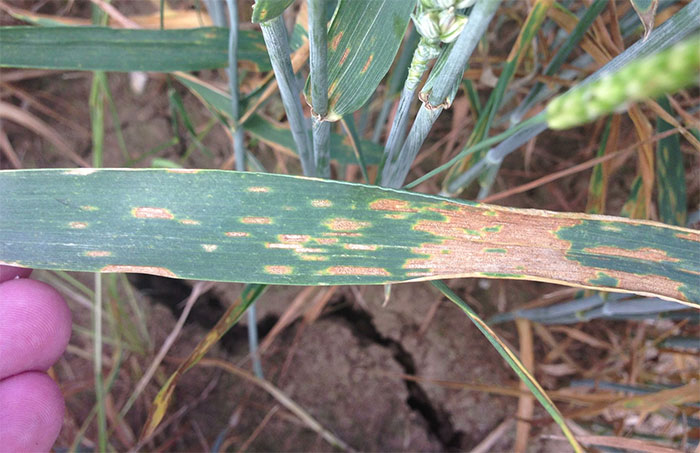
Computer scientists are devising new and more efficient ways to spot diseased crops to help boost harvest yields.
Researchers are developing image processing and machine learning programs to discover disease on pictures of crop leaves and assess the severity of infection.
A new detection system could dramatically speed up diagnosis compared to the current time-consuming method of walking among crops, using visual observation and estimation to calculate the disease’s damage.
Novel diagnostic software could give growers more accurate information on which to base their disease control strategies and stop crop yields from being reduced by infection.
Dr Liangxiu Han, from the School of Computing, Maths and Digital Technology, is working with the Food and Environment Research Agency (FERA) on the six-month pilot study.
Dr Han said: “Plant diseases are a major foe to global food security, which have the potential to significantly decrease crop yields and increase post-harvest losses, especially in the face of climate change. Disease prevention and management are essential for the sustainability of our society.
“The diseased crops display leaves with different patterns - ‘yellow rust’ or septoria leaf blotch. It’s this yellow rust pattern we’re trying to detect. Current detection methods can lead to bias and inaccuracy, as well as being costly and time-consuming.
“The software will estimate the disease age and what percentage of the crop is infected, which can then be used for disease control to help protect crop yields.”
The pilot study began in July, and is funded by £50,000 from Sustainability Society Network and the Research Councils UK’s Digital Economy programme.
FERA, part of the Department of Environment, Food and Rural Affairs, monitors crop diseases across UK farmland and will provide large crop image databases for Dr Han’s research.
Dr Han will be analysing infected wheat crops for the pilot study.
